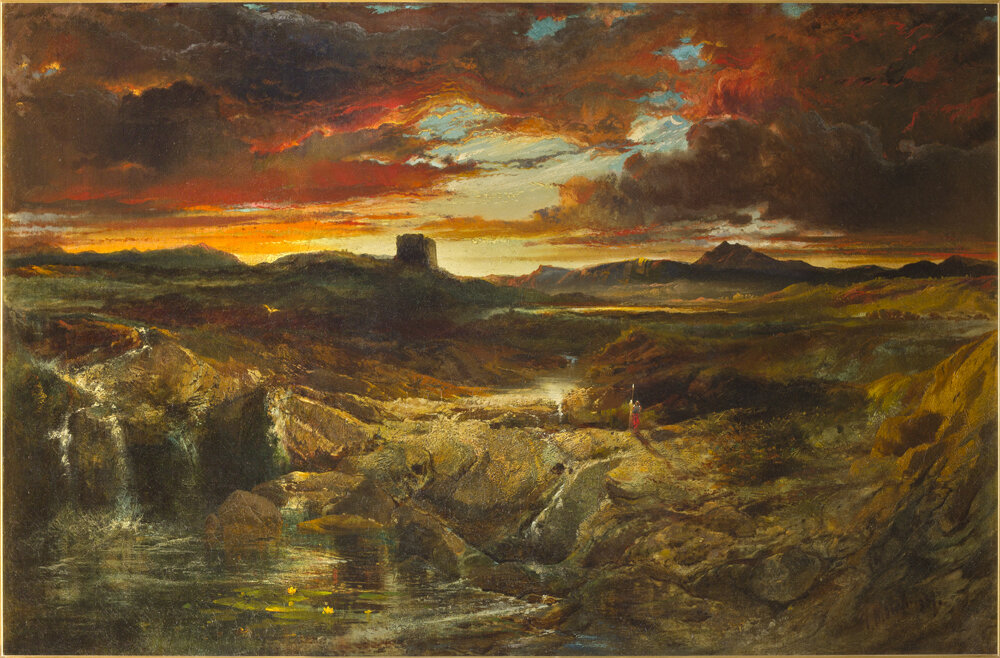Thomas Moran, Childe Roland to the Dark Tower Came, 1859 (2016.1.50)
Thomas Moran (American, 1837-1926)
This early painting by Thomas Moran pre-dates the artist's extensive travels to the American West and Europe; in fact, he had only recently completed his first oil painting, Among the Ruins There He Lingered (1856). At the time that Childe Roland lo the Dark Tower Came was created, in 1859, the young Moran was living in Philadelphia with his family and had been released from an apprenticeship with a wood engraver and illustrator. He enjoyed frequent sketching trips to the countryside surrounding the city, as well as informal art instruction from his brother Edward Moran, a marine painter. Moran's most valuable resource at this time was the accessibility of the Pennsylvania Academy of the Fine Arts, where he had the opportunity to view large landscape paintings by both American and European artists. It was not until 1861 that he traveled to London to begin formal training at the Royal Academy, at which time he was introduced to and greatly influenced by the dramatic landscape paintings of Joseph Mallard William Turner.
The barren, lunar land depicted in Childe Roland lo the Dark Tower Come must therefore be almost completely imagined by Moran. Inspired by the vivid imagery of Robert Browning's poem by the same name, Moran employs strong Romantic and Sublime qualities in his composition. The small figure of Childe Roland (Childe used as a medieval title for a man en route to knighthood), gazes across the harsh terrain at his destination in the distance, dwarfed by the vastness of the landscape. The ominous, fiery sky warns of the difficult and deadly journey that our hero will face.
Browning's poem was published in 1855 as part of a collection titled Men and Women. His poem was in turn taken from William Shakespeare's King Lear, in which the character Edgar sings nonsense in an attempt to feign madness and avoid murder by his step-brother:
Childe Roland to the dark tower came.
His word was still Fie, fob, and fum,
I smell the blood of a British man.'
In his poem, Browning has imagined a dangerous journey for the knight-in-training. Although his descriptions of the journey to the dark tower are visually explicit, they do more to conjure strong emotions of fear and despair, which Moran has carried to his interpretation. For example, Moran must have been particularly inspired by the phrase:
Thus, I had so long suffered in this quest,
Heard failure prophesied so oft, been writ
So many times among “The Band”—to wit,
The knight who to the Dark Tower’s search addressed
Their steps—that just to fail as they, seemed best,
And all the doubt was now—should I be fit.
Detail
This early work showcases the raw talent and strong imagination of Thomas Moran, as well as his interest in contemporary literature, an inspiration he would return to throughout his career. Although he became known for his observations of nature, particularly in the western United States, he always maintained an interest in fantasy, and the drama present in Childe Roland foretells his grandiose interpretations of natural wonders.

